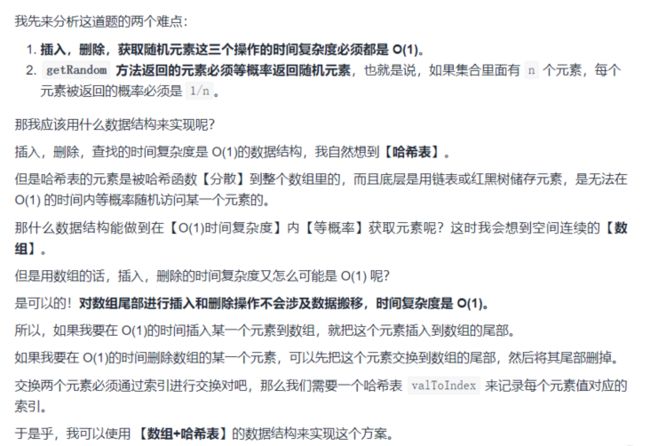第一题 二叉树的序列化与反序列化
题目
解题思路
本题有两个子问题
第一个为
将二叉树序列化为一个字符串,即为二叉树的遍历
关于树的遍历,有深搜和广搜两种
深搜又按根节点的位置分为先序遍历,中序遍历,后序遍历三种情况
这里我们规定 使用先序遍历将其转化为字符串序列
这里我们使用包strconv完成对基本数据类型的字符串表示的转换
Atoi(string to int)和 Itoa(int to string)
func (Codec) serialize(root *TreeNode) string {
sb := &strings.Builder{}
var dfs func(*TreeNode)
dfs = func(node *TreeNode) {
if node == nil {
sb.WriteString("null,")
return
}
sb.WriteString(strconv.Itoa(node.Val))
sb.WriteByte(',')
dfs(node.Left)
dfs(node.Right)
}
dfs(root)
return sb.String()
}第二个为
将序列化的字符串重新转化为树
根据先序遍历的规则
字符的第一个元素为根节点
这里使用函数strings.Split函数按指定的分隔符切割字符串,并返回切割后的字符串切片。
方便我们对字符串进行操作
func (Codec) deserialize(data string) *TreeNode {
sp := strings.Split(data, ",")
var build func() *TreeNode
build = func() *TreeNode {
if sp[0] == "null" {
sp = sp[1:]
return nil
}
val, _ := strconv.Atoi(sp[0])
sp = sp[1:]
return &TreeNode{val, build(), build()}
}
return build()
}具体代码为
package main
import (
"strconv"
"strings"
)
type TreeNode struct {
Val int
Left *TreeNode
Right *TreeNode
}
type Codec struct{}
func Constructor() (_ Codec) {
return
}
func (Codec) serialize(root *TreeNode) string {
sb := &strings.Builder{}
var dfs func(*TreeNode)
dfs = func(node *TreeNode) {
if node == nil {
sb.WriteString("null,")
return
}
sb.WriteString(strconv.Itoa(node.Val))
sb.WriteByte(',')
dfs(node.Left)
dfs(node.Right)
}
dfs(root)
return sb.String()
}
func (Codec) deserialize(data string) *TreeNode {
sp := strings.Split(data, ",")
var build func() *TreeNode
build = func() *TreeNode {
if sp[0] == "null" {
sp = sp[1:]
return nil
}
val, _ := strconv.Atoi(sp[0])
sp = sp[1:]
return &TreeNode{val, build(), build()}
}
return build()
}复杂度分析
时间复杂度:O(n);我们只访问每个节点一次,因此时间复杂度为 O(n),其中 n 是节点数,即树的大小。
空间复杂度:O(n);在序列化和反序列化函数中,我们递归会使用栈空间,故渐进空间复杂度为 O(n)。
第二题 常数时间插入、删除和获取随机元素
题目
思路
代码
type RandomizedSet struct {
m map[int]int
nums []int
}
func Constructor() RandomizedSet {
return RandomizedSet{
m: make(map[int]int),
nums: []int{},
}
}
func (this *RandomizedSet) Insert(val int) bool {
// val存在,无需插入
if _, ok := this.m[val]; ok {
return false
}
// 若 val 不存在,插入到 nums 尾部,
// 并记录 val 对应的索引值
this.nums = append(this.nums, val)
this.m[val] = len(this.nums) - 1
return true
}
func (this *RandomizedSet) Remove(val int) bool {
// 若 val 不存在,不用再删除
if _, ok := this.m[val]; !ok {
return false
}
//存在,开始删除操作
// 拿到待删除 val 的索引
index := this.m[val]
// 最后一个元素的索引
lastIndex := len(this.nums) - 1
//完成元素交换
// 将最后一个元素对应的索引修改为 index
this.m[this.nums[lastIndex]] = index
// 交换 val 和最后一个元素 (将 val 索引位置设为最后一个值也可)
this.nums[index], this.nums[lastIndex] = this.nums[lastIndex], this.nums[index]
// 将数组中最后一个值 val 删除
this.nums = this.nums[0 : len(this.nums)-1]
// 删除元素 val 对应的索引
delete(this.m, val)
return true
}
func (this *RandomizedSet) GetRandom() int {
return this.nums[rand.Intn(len(this.nums))]
}
复杂度分析
时间复杂度:O(1),
空间复杂度:O(N),在动态数组和哈希表分别存储了 N 个元素的信息。


